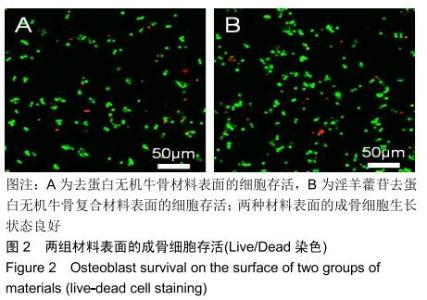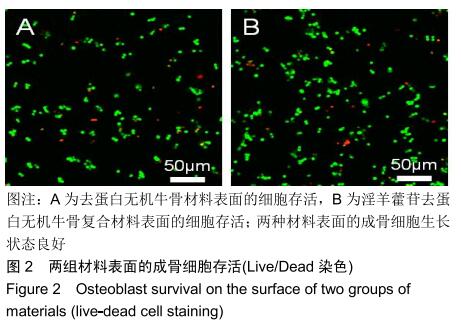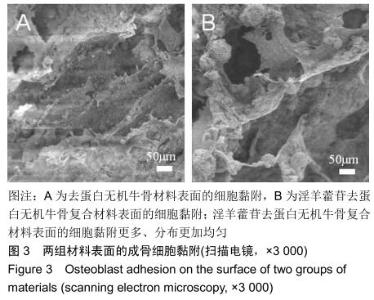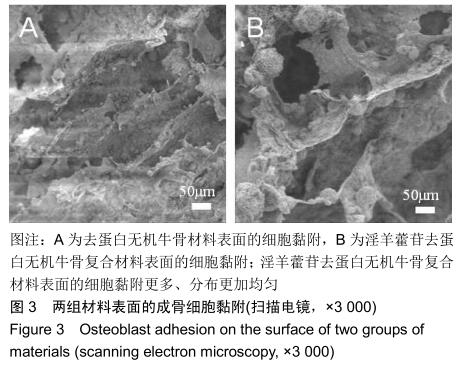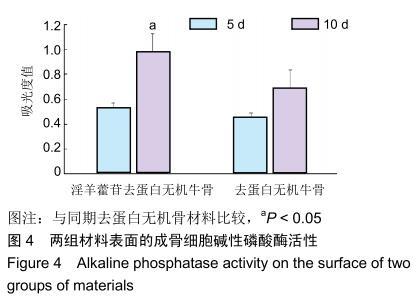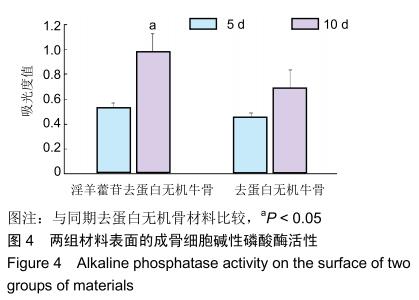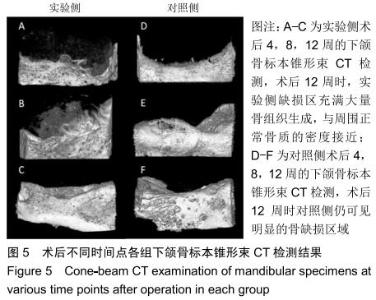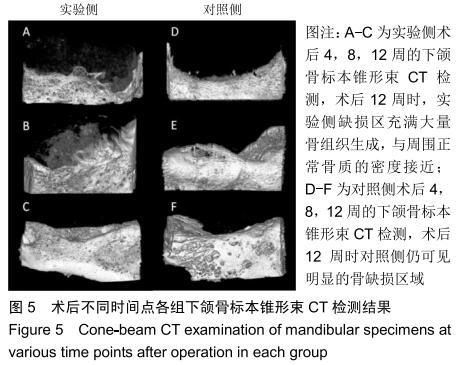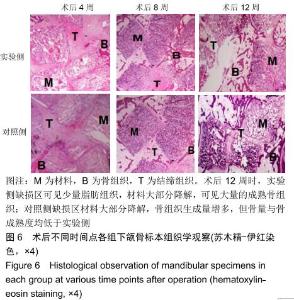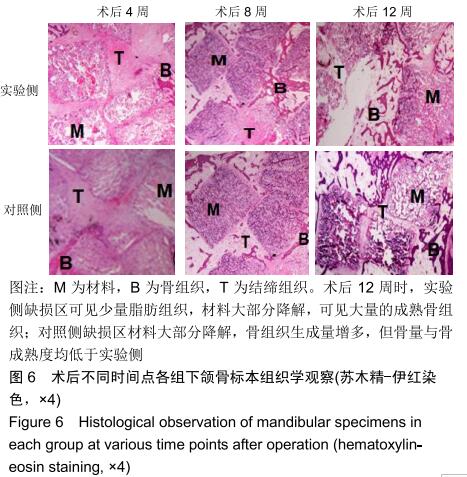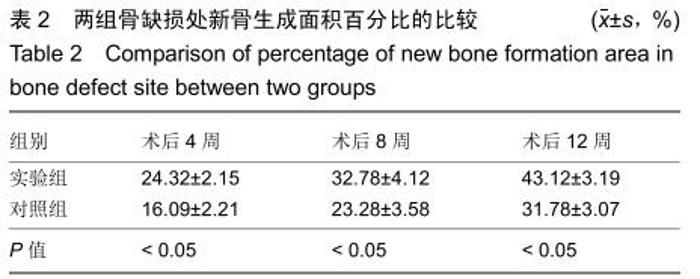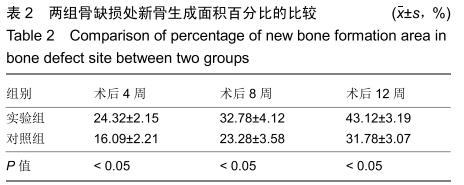|
[1] SHEN MH, HUANG YL, LI Z, et al. Effect of platelet rich fibrin combining with Bio-oss to treat furcation involvement. Shanghai Kou Qiang Yi Xue. 2018;27(5):508-512.
[2] FAN YP, LU JF, XU AT, et al. Physiochemical characterization and biological effect of anorganic bovine bone matrix and organic-containing bovine bone matrix in comparison with Bio-Oss in rabbits.J Biomater Appl.2018;33(4):566-575.
[3] ALUDDEN HC, MORDENFELD A, HALLMAN M, et al. Lateral ridge augmentation with Bio-Oss alone or Bio-Oss mixed with particulate autogenous bone graft: a systematic review.Int J Oral Maxillofac Surg.2017;46(8):1030-1038.
[4] KASUYA S, KATO-KOGOE N, OMORI M, et al. New Bone Formation Process Using Bio-Oss and Collagen Membrane for Rat Calvarial Bone Defect: Histological Observation. Implant Dent.2018.doi: 10.1097/ID.0000000000000738. [Epub ahead of print]
[5] SMITH MM, DUNCAN WJ, COATES DE. Attributes of Bio-Oss® and Moa-Bone® graft materials in a pilot study using the sheep maxillary sinus model.J Periodontal Res. 2018;53(1):80-90.
[6] HUH JB, YANG JJ, CHOI KH, et al. Effect of rhBMP-2 Immobilized Anorganic Bovine Bone Matrix on Bone Regeneration.Int J Mol Sci.2015;16(7):16034-16052.
[7] 李建国,谢兴文,李鼎鹏,等.淫羊藿提取物淫羊藿苷在细胞水平防治骨质疏松症的研究概况[J].中国骨质疏松杂志,2019,25(1): 132-135.
[8] 杨卫,赵品,陶美玲,等.淫羊藿苷口服给药对骨质疏松牙周炎小鼠牙槽骨吸收的影响[J].上海口腔医学,2019,28(1):30-35.
[9] WU G, HUNZIKER EB, ZHENG Y, et al.Functionalization of deproteinized bovine bone with a coating-incorporated depot of BMP-2 renders the material efficiently osteoinductive and suppresses foreign-body reactivity.Bone. 2011;49(6): 1323-1330.
[10] 郝福良.淫羊藿苷促进兔颅骨缺损修复愈合的影响和机制的探讨[D].石家庄:河北医科大学,2013.
[11] 张黎声,韩小晶,罗志荣,等.淫羊藿苷对大鼠骨髓间充质干细胞迁移作用的影响[J].中国中医药信息杂志,2017,24(2):4.
[12] 刘天麟,张学斌,张忻,等.淫羊藿苷对犬骨髓间充质干细胞增殖、成骨和成脂分化的影响[J].口腔颌面外科杂志,2014,24(4):27.
[13] 付殷,孙贵才,欧阳玉龙,等.氯化锂联合淫羊藿苷对成骨细胞增殖分化的影响[J].中国骨质疏松杂志,2019,25(9):1221-1225.
[14] 安庆,刘国雄,Bikash KumarSah,等.淫羊藿苷对MC3T3-E1细胞增殖分化的影响及机制研究[J].安徽医科大学学报,2019,54(6): 893-898.
[15] 吴曦,彭锐.不同浓度淫羊藿苷对人骨髓间充质干细胞成骨分化的影响[J].中国组织工程研究,2018,22(5):669-674.
[16] 谢利娜,刘艳辉,赵波,等.淫羊藿苷与BMP-2对体外培养成骨细胞增殖的影响[J].北京口腔医学,2018,26(6):319-322.
[17] 朱晓峰,张荣华,孙升云,等.淫羊藿苷通过雌激素受体和p38MAPK信号诱导MC3T3-E1Subclone14细胞的分化[J].中国老年学杂志,2012,32(5):957-960 .
[18] HSIEH TP, SHEU SY, SUN JS, et al. Icariin isolated from Epimedium pubescens regulates osteoblasts anabolism through BMP-2,SMAD4,and Cbfa1 expression. Phytomedicine. 2010;17(6):414-423.
|
